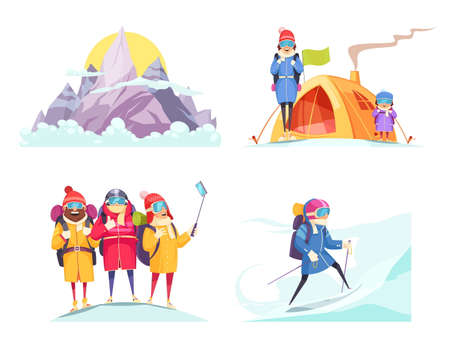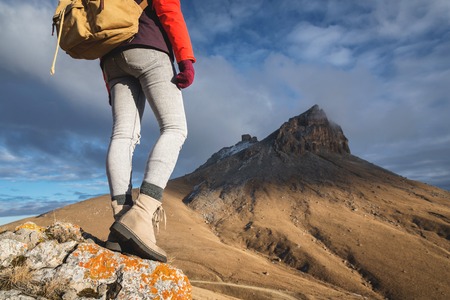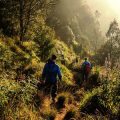1. Introduction: Footprints in Deep Time
Imagine lacing up your boots, the British drizzle on your cheeks, and the thrill of adventure fizzing in your veins. Beneath each step, a hidden world waits—layers upon layers of ancient secrets pressed into stone. This is not just any walk in the park; this is a dynamic leap into deep time, where every pebble and ridge tells tales older than castles or kings. Across the UK, our rolling hills and craggy coastlines are more than picturesque—they’re living storybooks for curious young minds hungry to decode the mysteries underfoot. Whether you’re scrambling along a Jurassic shore in Dorset or picking through pebbles on a Lake District fell, British geology offers a playground for explorers ready to discover how mighty forces shaped our land. So gather your sense of wonder and let’s set out: the science of our landscape is calling, promising epic stories written in stone for those brave enough to listen.
2. Essential Kit: Gearing Up for Geological Adventure
If you’re set on exploring the wild, rocky tapestry of Britain’s landscape, preparation is your first act of bravery. Geology walks are not just a stroll in the park—they’re an open invitation to mud, rain, and surprise discoveries beneath your wellies! Here’s how to kit out like a true British geologist-in-training.
The Must-Have Equipment List
| Item | Why You Need It | Top Tip |
|---|---|---|
| Wellies (Wellington Boots) | Mud is inevitable—embrace it! | Opt for sturdy soles; slippery rocks await. |
| Weatherproofs (Waterproof Jacket & Trousers) | Britain’s weather changes faster than you can say “sedimentary rock.” | Pockets are essential for maps and treasures. |
| Hand Lens | Inspect fossils, crystals, and rock grains up close. | Attach to a lanyard—easy access for every eureka moment. |
| OS Map & Compass | Don’t rely solely on tech—signal can vanish on remote moors. | Learn basic map skills before you go—adventure awaits the prepared! |
| Field Notebook & Pencil | Document finds, sketch landscapes, and jot down questions for later research. | A waterproof notebook keeps your notes readable even in a drizzle. |
| Backpack with Snacks & Water Bottle | You’ll burn more energy than you think scrambling over outcrops. | Packed sandwiches and flapjacks are classic geologist fuel. |
Treats Fit for an Intrepid Young Geologist
No one solves the mysteries of ancient rocks on an empty stomach. Fill your rucksack with hearty British classics: cheese and pickle sandwiches, oat flapjacks, and perhaps a thermos of hot chocolate for that windswept summit pause. Don’t forget reusable containers—a true adventurer leaves no trace but footprints and field notes!
Safety First: Keep Your Adventure Smart
Packing sun cream might seem optimistic, but UV rays bounce off chalk cliffs surprisingly well. Always let someone know your route and expected return time. And remember: some rocks are best left where they are—take memories and photos home instead of fossils from protected sites. With this essential kit at hand, Britain’s geological wonders are yours to uncover—rain or shine!

3. Rock Stars and Fossil Finds: Famous UK Sites to Explore
Ready to lace up your boots and become a real-life rock hound? Britain’s geological wonders are more than just pretty backdrops—they’re natural playgrounds brimming with stories written in stone. First stop: the legendary Jurassic Coast in Dorset, where 185 million years of Earth’s history unfurl along dramatic cliffs and fossil-laden beaches. Here, young explorers can embark on a fossil hunt at Lyme Regis, sifting through shingle for ammonites or even the odd ichthyosaur vertebra. Don’t forget your magnifying glass—there’s every chance you’ll unearth something ancient!
Dovedale: Derbyshire’s Limestone Labyrinth
Next up, adventure north to Dovedale in the Peak District, famed for its limestone ravines and iconic stepping stones across the River Dove. This is a top spot for hands-on geology: feel the cool touch of limestone that was once a tropical sea bed teeming with prehistoric life. Challenge young minds to spot ripple marks from ancient waves or tiny fossils embedded in the rocks—proof that this peaceful valley was once an underwater world.
The Giant’s Causeway: Northern Ireland’s Mythic Marvel
No whistle-stop tour is complete without the epic Giant’s Causeway. March across its surreal hexagonal columns, formed by volcanic eruptions 60 million years ago. Encourage curious youngsters to count the stones, leap from one to another, and imagine giants striding across the sea. Local legend or not, this UNESCO World Heritage site offers a mind-boggling look at how fire and time can shape our landscape.
Field Tasks for Brave Young Geologists
At each site, challenge your crew with tasks fit for junior scientists: collect different rock samples (always following local guidelines), sketch fossils or rock layers in their field notebook, and use compasses to measure cliff angles. Whether you’re dodging waves on the Jurassic Coast, balancing on Dovedale’s stepping stones, or climbing basalt columns at the Causeway, these adventures promise muddy boots and memories forged in stone—a true British geology quest.
4. Geological Detective Work: Reading Clues in the Landscape
Imagine stepping out into the wilds of the British countryside, your boots crunching over ancient stone, as you and your young explorers become true geological detectives. The UK’s landscape is a living, breathing map – one that tells stories of vanished oceans, primeval forests, and creatures lost to time. With a keen eye and a sense of adventure, children can learn to spot the subtle clues left behind by millions of years of Earth’s history.
Guidance for Spotting and Collecting
Start by arming your team with basic tools: a sturdy magnifying glass, a field notebook, a pencil, and a small cloth bag. Remind them that collecting should be done respectfully—only take loose finds from public paths or beaches, and always check local guidelines. Encourage kids to look for:
- Rock Types: Can they distinguish between granite, limestone, sandstone, or chalk?
- Fossils: On pebbly shores like Lyme Regis or Whitby, keep an eagle eye out for ammonites, belemnites, or even fossilised plants.
- Landscape Features: Notice how rivers carve valleys, cliffs reveal layers (strata), or glacial boulders dot fields far from their origins.
Interpreting the ‘Hidden Map’
Empowering children to read this hidden map means showing them how rocks and fossils are not just objects—they are clues to past environments. Here’s a simple table to help decode some common finds across the UK:
| Clue Found | What It Tells Us | Where to Look |
|---|---|---|
| Chalk with Flint Nodules | An ancient tropical sea once covered the area | South Downs, White Cliffs of Dover |
| Ripple Marks in Sandstone | A prehistoric river or beach existed here | Pennines, Peak District |
| Fossilised Ammonite | The site was a Jurassic seabed teeming with life | Dorset Coast (Jurassic Coast) |
Top Tips for Budding Rock Sleuths
- Always record where you found each specimen—it helps unlock its story.
- If unsure about a find, sketch it in your notebook and try to identify it later at home or in a local museum.
The Adventure Continues…
Every pebble tells a tale; every cliff face is an open book waiting to be read. By guiding children through these hands-on discoveries across the UK’s dramatic hillsides and winding riverbeds, you’ll ignite their curiosity—and perhaps inspire the next generation of explorers who never stop asking what secrets lie beneath their feet.
5. Eco-Respect: Treading Lightly Across the Land
A Call to Protect Britain’s Geological Heritage
With every step we take across Britain’s rolling hills, rugged cliffs, and ancient moorlands, we become a part of a grand story that spans millions of years. Our landscape is not just a backdrop for adventure—it is a living museum shaped by time, tectonics, and the unyielding forces of nature. As curious explorers on geology-themed walks, it’s our duty to act as guardians of these precious environments.
Embracing the Countryside Code
The British countryside is crisscrossed with footpaths and bridleways, each route leading us deeper into geological marvels. But exploration must go hand in hand with respect. The Countryside Code isn’t just polite suggestion—it’s our blueprint for responsible adventure. Stick to marked paths to avoid trampling fragile habitats. Take your litter home; leave only bootprints behind. Gates should be left as you find them—closed to protect livestock, or open if that’s how you found them.
Cherishing Natural Wonders for Future Generations
Every fossil embedded in a cliff face, every ripple in an ancient riverbed, tells a chapter of Earth’s story. Collect memories and photographs, not specimens—removing rocks or fossils can cause irreparable harm and rob future explorers of discovery. If you’re lucky enough to spot something remarkable, report it to local geological societies rather than pocketing it. Let’s ensure that children decades from now can stand in awe at the same wonders you do today.
The Spirit of Adventure—With Respect
True adventure is about more than reaching the summit or uncovering hidden gems; it’s about forging a connection with the land and leaving it better than you found it. Challenge yourself to walk lightly, tread mindfully, and share your knowledge with fellow adventurers. By championing eco-respect and following the Countryside Code, we guarantee that Britain’s geological treasures remain wild and wondrous—for all who seek them, now and forever.
6. Bringing It Home: Making the Learnings Stick
The adventure doesn’t end when you hang up your walking boots or shake the grit from your socks. True explorers know that geology isn’t just out there on windswept moors or dramatic coastlines—it’s right under our noses, woven into daily life across Britain. To keep that spark alive, bring the landscape home with a few creative, hands-on projects that will make geology unforgettable for curious young minds.
Start a Rock Collection: A Trophy Cabinet of Natural Wonders
Every expedition can yield treasures—so why not begin a family rock collection? Whether it’s a glittering piece of quartz from Dartmoor or a fossilised shell from Yorkshire, each find tells a story about Britain’s ancient past. Set up a simple display shelf at home and label your specimens with location and date; this turns every walk into a hunt for geological trophies and builds a tangible connection to the land.
Home Experiments: The Kitchen Becomes Your Laboratory
You don’t need a lab coat or fancy kit to dive deeper into earth science. Try classic experiments like making your own ‘lava lamp’ with oil and water to demonstrate density, or grow salt crystals overnight to see mineral formation in action. For those who like a bit of mess and fun, create edible sedimentary layers using different coloured puddings and crushed biscuits—geology never tasted so good!
Storytelling: Weaving Legends from Stone
Britain’s landscapes are steeped in myth—why not invent your own? After each walk, encourage kids to craft stories inspired by their discoveries: perhaps the chalk cliffs are the bones of sleeping giants, or pebbles in the garden were left by ancient river spirits. Sharing these tales over dinner or at bedtime keeps curiosity bubbling and roots their new knowledge in imagination as well as fact.
By blending collecting, experimenting, and storytelling, you’ll transform geology walks into lifelong adventures. Each pebble picked up and each tale spun helps young explorers realise that Britain’s extraordinary landscape is both playground and classroom—a place where science meets daily wonder.


